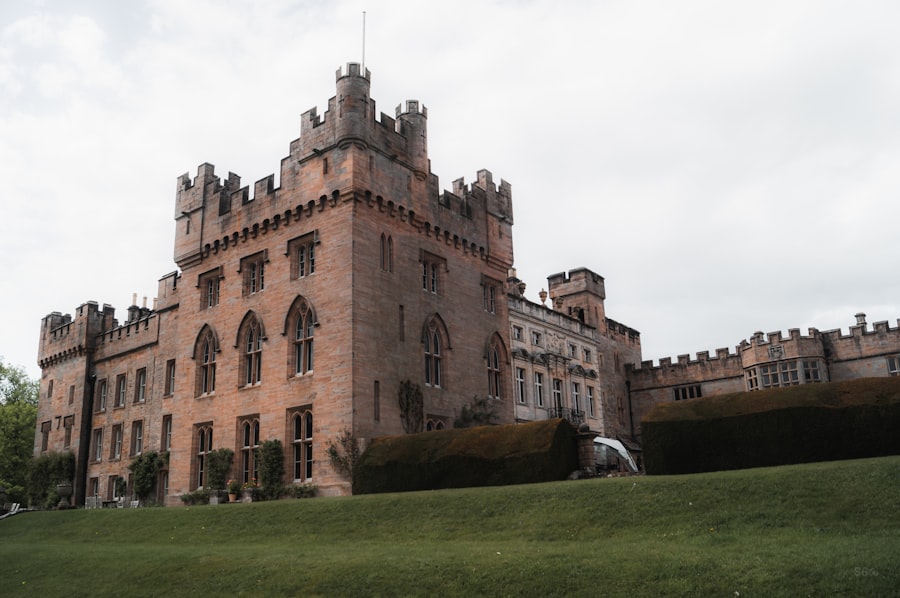Download links
How to install Restoring Glory: Manila Cathedral's Renovation APK?
1. Tap the downloaded Restoring Glory: Manila Cathedral's Renovation APK file.
2. Touch install.
3. Follow the steps on the screen.
Description
The Manila Cathedral, officially known as the Cathedral-Basilica of the Immaculate Conception, stands as a testament to the rich history and cultural heritage of the Philippines.
This initial edifice was constructed primarily from bamboo and nipa palm, reflecting the indigenous architectural styles of the time.
However, it was not long before the cathedral faced challenges, including natural disasters such as earthquakes and fires, which necessitated its reconstruction multiple times over the centuries. The most significant of these reconstructions occurred in 1954, when the cathedral was rebuilt in a neo-Romanesque style after being heavily damaged during World War
Throughout its history, the Manila Cathedral has served as a focal point for the Catholic community in the Philippines. It has hosted numerous significant events, including papal visits and national celebrations. The cathedral is not only a place of worship but also a symbol of resilience and faith for Filipinos.
Its architectural evolution reflects the changing times and influences, from its Baroque beginnings to its current neo-Gothic design, which features stunning stained glass windows and intricate stone carvings. Each iteration of the cathedral tells a story of survival and adaptation, making it a living monument to the Philippines’ colonial past and its journey toward independence.
Key Takeaways
- Manila Cathedral has a rich history dating back to the 16th century, with several reconstructions due to natural disasters and war.
- The need for renovation arose due to structural damage caused by earthquakes and typhoons, as well as wear and tear over time.
- The renovation process involved extensive planning, fundraising, and collaboration with architects and engineers to ensure the cathedral’s structural integrity and historical significance were preserved.
- Restoring the cathedral’s architectural features included repairing and enhancing its iconic dome, stained glass windows, and intricate carvings.
- Preserving the cathedral’s historical artifacts involved careful restoration of religious relics, artwork, and historical documents, ensuring they remain accessible to future generations.
The Need for Renovation

As with many historical structures, the passage of time took its toll on the Manila Cathedral. By the early 21st century, signs of wear and tear became increasingly evident. The effects of pollution, weathering, and seismic activity had left their mark on the cathedral’s façade and interior.
Cracks appeared in the walls, while the once-vibrant colors of the stained glass windows began to fade. The need for renovation became apparent not only to preserve the building’s structural integrity but also to maintain its status as a vital center for worship and community gatherings. Moreover, the growing number of visitors to the cathedral highlighted the necessity for modernization.
As one of Manila’s most visited landmarks, it attracted both local and international tourists eager to experience its historical significance. However, the lack of modern amenities posed challenges for accessibility and comfort. The cathedral’s facilities were not equipped to handle large crowds effectively, leading to concerns about safety and visitor experience.
Thus, a comprehensive renovation plan was deemed essential to address these issues while respecting the cathedral’s historical essence.
The Renovation Process
| Stage | Duration | Cost |
|---|---|---|
| Planning | 2 weeks | 500 |
| Demolition | 1 week | 1000 |
| Construction | 4 weeks | 5000 |
| Finishing | 2 weeks | 2000 |
The renovation process for Manila Cathedral was a monumental undertaking that required careful planning and execution. Spearheaded by the Archdiocese of Manila, the project aimed to restore the cathedral to its former glory while ensuring it met contemporary standards for safety and accessibility. The first step involved conducting a thorough assessment of the building’s condition, which included structural evaluations and historical research to understand its architectural significance fully.
Once the assessment was complete, a team of architects, historians, and conservationists collaborated to develop a detailed renovation plan. This plan prioritized preserving original materials and techniques while integrating modern construction methods where necessary. The project was divided into phases to minimize disruption to ongoing services and activities at the cathedral.
Each phase focused on specific areas, such as structural reinforcement, restoration of decorative elements, and upgrades to facilities. This meticulous approach ensured that every aspect of the renovation was executed with precision and respect for the cathedral’s historical context.
Restoring the Cathedral’s Architectural Features
One of the most critical aspects of the renovation was restoring the architectural features that define Manila Cathedral’s character. The neo-Gothic style is characterized by pointed arches, ribbed vaults, and flying buttresses, all of which required careful attention during restoration. Skilled artisans were brought in to repair damaged stonework and replicate intricate details that had been lost over time.
This included restoring the iconic façade, which features statues of saints and biblical figures that are integral to its identity. In addition to structural repairs, efforts were made to restore the cathedral’s stunning stained glass windows. These windows are not only artistic masterpieces but also serve as visual narratives depicting biblical stories and saints’ lives.
The restoration process involved cleaning decades of grime and replacing broken or missing pieces with glass that matched the original in color and texture. This meticulous work ensured that the windows would continue to inspire awe among visitors while preserving their historical significance.
Preserving the Cathedral’s Historical Artifacts

Preservation Efforts
During the renovation process, special care was taken to catalog and preserve these artifacts to ensure they remained protected throughout construction activities. This required close collaboration with art conservators who specialized in religious artifacts to assess their condition and determine appropriate preservation methods.
Notable Artifacts
One notable artifact is the original altar, which dates back to the 19th century and features intricate carvings and gold leaf detailing. The altar underwent a thorough restoration process that included cleaning, repairing damaged sections, and reinforcing its structural integrity.
By preserving these artifacts, the renovation not only safeguarded their physical condition but also honored their cultural and spiritual significance.
Modern Amenities and Upgrades
While preserving historical elements was paramount during the renovation of Manila Cathedral, integrating modern amenities was equally important for enhancing visitor experience. The cathedral’s facilities were upgraded to accommodate larger crowds while ensuring accessibility for individuals with disabilities. This included installing ramps and elevators that provide easy access to different levels of the cathedral without compromising its architectural integrity.
In addition to accessibility improvements, modern lighting systems were installed to enhance both functionality and aesthetics within the cathedral. These systems were designed to highlight architectural features while providing adequate illumination for services and events. Furthermore, sound systems were upgraded to ensure clear audio during masses and special ceremonies, allowing congregants to fully engage in worship without distraction.
These enhancements aimed not only to improve visitor comfort but also to create an environment conducive to spiritual reflection.
The Role of the Community in the Renovation
The renovation of Manila Cathedral was not solely an endeavor undertaken by church authorities; it also involved significant community engagement. Local parishioners played an essential role in supporting fundraising efforts aimed at financing the renovation project. Various initiatives were launched within the community, including donation drives, fundraising events, and outreach programs that encouraged participation from all sectors of society.
Moreover, community involvement extended beyond financial contributions; many volunteers offered their time and skills during various phases of restoration work. This grassroots support fostered a sense of ownership among parishioners regarding their cathedral’s future. It also reinforced the idea that Manila Cathedral is not just a building but a vital part of their collective identity as a community rooted in faith and history.
Celebrating the Reopening of Manila Cathedral
After years of dedicated work, the grand reopening of Manila Cathedral marked a momentous occasion for both parishioners and visitors alike. The event was celebrated with a solemn mass attended by dignitaries, clergy members, and thousands of faithful who had eagerly awaited this moment. The atmosphere was filled with joy as attendees marveled at the restored beauty of their beloved cathedral.
The reopening ceremony included special performances by local choirs and cultural presentations that highlighted Filipino traditions intertwined with religious practices. This celebration served not only as a recognition of the hard work put into restoring Manila Cathedral but also as an affirmation of faith for those who consider it a sacred space. As visitors stepped inside once again, they were greeted by vibrant stained glass windows casting colorful light across polished stone floors—a powerful reminder of resilience, community spirit, and enduring faith that defines Manila Cathedral’s legacy in Philippine history.
FAQs
What is the Manila Cathedral?
The Manila Cathedral, also known as the Metropolitan Cathedral of the Immaculate Conception, is a Roman Catholic basilica located in the Intramuros district of Manila, Philippines.
When was the Manila Cathedral built?
The original Manila Cathedral was built in 1581, but it has been destroyed and rebuilt several times due to natural disasters and wars. The current structure was completed in 1958.
What is the architectural style of the Manila Cathedral?
The Manila Cathedral features a combination of architectural styles, including Baroque, Neo-Romanesque, and Neo-Byzantine influences.
What is the significance of the Manila Cathedral?
The Manila Cathedral is a significant religious and cultural landmark in the Philippines. It has been the site of many important events in the country’s history, including the papal visits of Pope Paul VI, Pope John Paul II, and Pope Francis.
Is the Manila Cathedral open to the public?
Yes, the Manila Cathedral is open to the public for worship, prayer, and guided tours. Visitors are welcome to explore the cathedral’s interior and learn about its history and significance.





